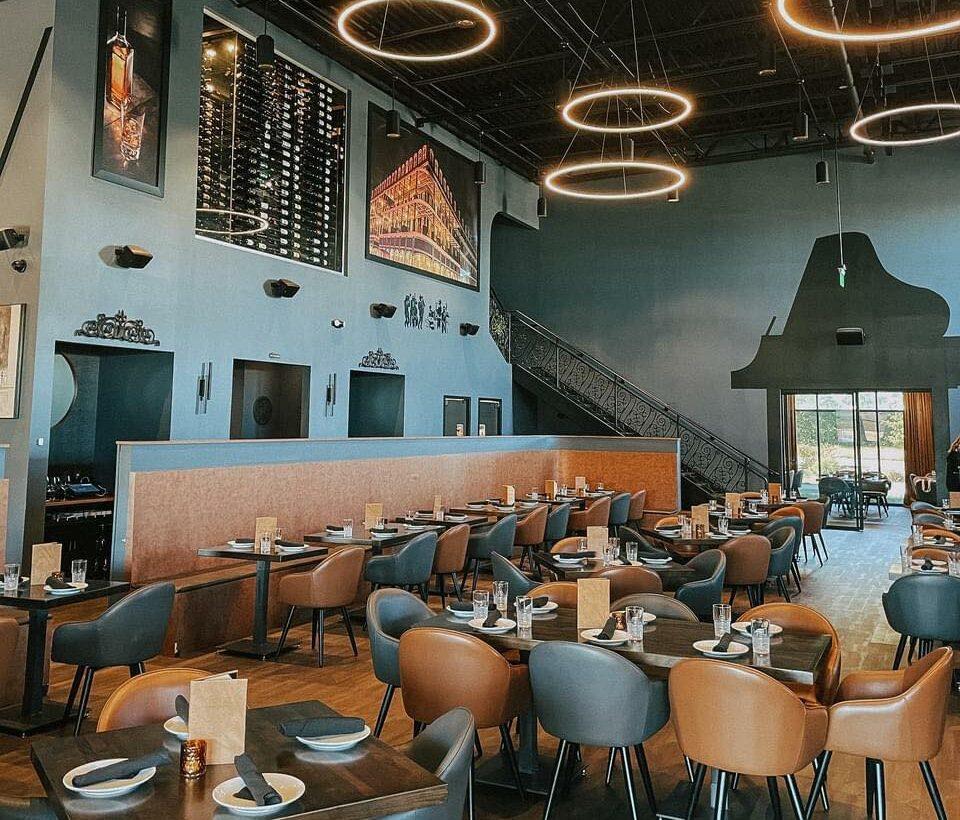Savor Genuine Eastern Cuisine With a Pan-Asian Spin for a Culinary Experience
Beginning on a culinary journey through genuine Oriental food, enhanced with a Pan-Asian twist, provides an unique opportunity to explore the rich tapestry of flavors that specify the region's varied culinary traditions. As you contemplate these attracting dishes, consider the social stories and historical impacts that shape them, each bite offering a tale waiting to be discovered. Fine dining experience Islamabad.

Exploring Pan-Asian Tastes
In the realm of worldwide gastronomy, Pan-Asian food sticks out for its remarkable variety and the unified interplay of tastes from numerous Oriental societies. This culinary technique commemorates the rich practices and distinct ingredients discovered across the continent, producing a tapestry of tastes that is both gratifying and appealing. Trick to Pan-Asian cuisine is its capacity to balance contrasting flavors-- sweet, salty, spicy, and sour-- while highlighting the freshness and high quality of each active ingredient.
From the umami-rich soy sauce of Japan to the intense chili peppers of Thailand, Pan-Asian food supplies a comprehensive combination of tastes. These aspects are commonly integrated in creative means, boosting meals with layers of complexity. For example, the usage of fragrant herbs such as lemongrass and cilantro, common in Vietnamese and Thai food, includes a refreshing illumination to dishes, while the unification of coconut milk supplies a luscious, abundant appearance.
The emphasis on fresh produce and aromatic spices makes certain that each dish is not only a banquet for the taste but additionally for the senses. Pan-Asian food welcomes restaurants to get started on a cooking trip, checking out the substantial and differed landscapes of Oriental gastronomy with every bite.
Fusion Recipes to Try
While Pan-Asian food is commemorated for its standard flavors, the contemporary cooking landscape is significantly welcoming blend recipes that mix these timeless elements with influences from other regions. This ingenious approach not just honors the abundant heritage of Asian culinary arts yet additionally presents unique preference experiences that attract modern tastes.
A prime instance of such a blend recipe is the Korean-Mexican taco, where seasoned bulgogi beef is wrapped in a warm tortilla, topped with kimchi and a zesty gochujang-infused salsa. This mix marries the vibrant, savory tastes of Korea with the vivid, fresh elements of Mexican food. In a similar way, sushi burritos have actually obtained popularity, amalgamating the delicate virtuosity of Japanese sushi with the hearty, hand-held comfort of a burrito, typically including blend active ingredients like tempura shrimp and avocado with a drizzle of wasabi mayo.
Another noteworthy dish is Thai curry ramen, which instills the velvety, aromatic flavors of Thai curry into the reassuring brew of standard Japanese ramen, developing an unified mix that entices the detects. These fusion recipes extend beyond mere novelty; they represent a cooking discussion between societies, urging expedition and technology in the globe of Pan-Asian food.
Crucial Active Ingredients and Seasonings
To absolutely appreciate Pan-Asian cuisine, one must recognize the crucial ingredients and spices that form its structure. This varied cooking style draws from an abundant tapestry of Oriental customs, employing a harmonious blend of structures and flavors. Key active ingredients consist of soy sauce, fish sauce, and oyster sauce, which pass on a mouthwatering la bella vita umami depth essential to Eastern dishes. Corresponding to these are rice vinegar and mirin, offering a delicate level of acidity and sweetness.
Aromatic components are essential, with ginger, garlic, and lemongrass being common across various Pan-Asian recipes. These components provide a great smelling base that improves the intricacy of tastes. Spices such as celebrity anise, cardamom, and cinnamon introduce heat and personality, resembling influences from regions like China and India.

Food Preparation Strategies and Tips
Understanding the art of Pan-Asian cuisine requires knowledge with its unique cooking techniques, each adding to the vivid tapestry of tastes this cooking custom is commemorated for. Central to these methods is the stir-fry, a quick food preparation method that protects the nutritional integrity and vibrant colors of active ingredients. Utilizing a frying pan, the stir-fry technique allows for even warmth circulation, important for accomplishing the characteristic texture and taste balance of Pan-Asian meals.
One more fundamental method is steaming, particularly widespread in Chinese food. This mild technique preserves the all-natural tastes and nutrients of active ingredients, making it excellent for fish and shellfish and veggies. Dumplings, a cherished staple, typically take advantage of steaming, causing soft, succulent textures.
Cooking, also important, passes on great smoky depths to meals such as Korean bulgogi or Japanese yakitori (Chinese food Islamabad). This technique commonly includes marinating components, permitting tastes to pass through deeply before cooking over an open flame or warmer
Last but not least, grasping the art of balancing flavors-- wonderful, sour, salty, bitter, and umami-- is crucial. Appropriately layering these components can elevate a dish from ordinary to phenomenal, providing a facility and satisfying culinary experience that embodies the essence of Pan-Asian cuisine.
Eating Experiences Worldwide
Around the world, Pan-Asian cuisine uses an unequaled eating experience, commemorated for its rich tapestry of tastes and vivid presentations. This culinary sensation has transcended cultural boundaries, recording the hearts and tastes of food lovers worldwide. In multicultural cities fresh York, London, and Sydney, Pan-Asian restaurants act as fusions where cooking practices from Thailand, Japan, China, and beyond assemble, supplying restaurants with an eclectic mix of recipes that highlight the area's diversity.
The international charm of Pan-Asian cuisine exists in its capability to provide both credibility and innovation. Cooks skillfully marry typical components such as lemongrass, soy sauce, and miso with contemporary strategies, leading to recipes that are both refreshingly new and familiar. This blend enables diners to start a cooking trip that appreciates heritage while accepting modernity.
Furthermore, eating experiences are elevated through attentively developed atmospheres that mirror the ethos of Pan-Asian appearances. From minimalist Japanese-inspired insides to vivid Thai-themed areas, each restaurant supplies a special setting that matches the culinary offerings. Because of this, patrons are not just taking in a meal but partaking in a social experience, making Pan-Asian dining a truly global sensation.
Conclusion
The exploration of Pan-Asian food uses an extensive understanding of the elaborate interaction of flavors and cooking customs across Asia. By embracing blend dishes such as Thai curry ramen and sushi burritos, the cooking trip not only highlights the flexibility of conventional active ingredients but additionally showcases cutting-edge modern strategies. This official source gastronomic journey, enhanced by cooking approaches and necessary spices, gives a distinct chance to value the multiculturalism and culinary virtuosity that define Pan-Asian cuisine on a worldwide scale.
Embarking on a culinary journey via authentic Asian cuisine, boosted with a Pan-Asian spin, provides a Read More Here distinct chance to discover the abundant tapestry of flavors that define the region's diverse cooking traditions.In the realm of international gastronomy, Pan-Asian food stands out for its remarkable variety and the harmonious interaction of flavors from different Eastern cultures. Key to Pan-Asian cuisine is its capability to stabilize contrasting tastes-- wonderful, salty, spicy, and sour-- while highlighting the quality and top quality of each component.

Comments on “Romantic Restaurants Islamabad: Suitable Dining Destinations for Couples”